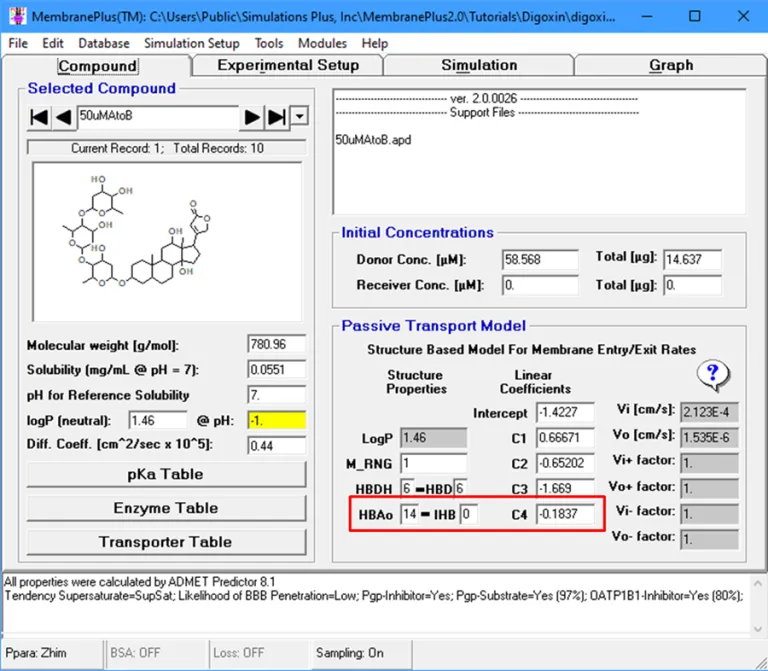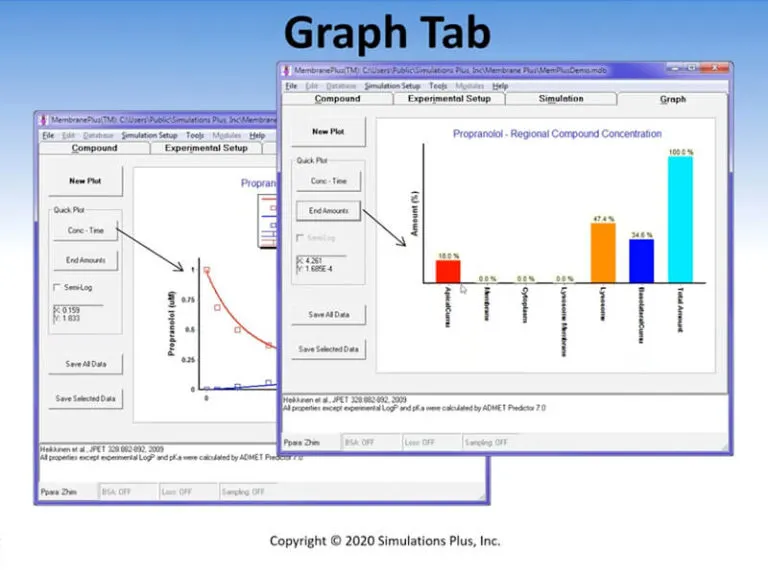
MembranePlus™ is a premier mechanistic modeling software for in vitro permeability and hepatocyte assays, facilitating IVIVE of drug absorption and systemic clearance.
Vendor
Simulations Plus
Company Website


MembranePlus™ is the industry’s leading mechanistic in vitro permeability and hepatocyte modeling software, serving as a crucial tool for IVIVE (in vitro-in vivo extrapolation) of absorption and systemic clearance/distribution processes. For over 20 years, significant research has been devoted to in vitro permeability (e.g., Caco-2 assays) and hepatocyte systems, with several guidelines being published and all pharmacopeia describing appropriate methods for testing. This software addresses critical challenges faced by researchers in drug discovery and development. Traditional in vitro experiments are often expensive, time-consuming, and material-intensive, making it difficult to prioritize compounds for early testing. MembranePlus™ helps ensure experimental designs are robust enough to capture all relevant information, and that researchers are not overlooking crucial data after collecting apparent permeability or intrinsic clearance. By providing a sophisticated modeling environment, MembranePlus™ enables more efficient and informed decision-making in the preclinical phase of drug development, allowing users to simulate complex biological processes and predict drug behavior.
Features & Benefits
- Transdermal Compartmental Absorption and Transit Module
- Allows users to model in vitro penetration tests (IVPT) and in vitro release tests (IVRT) in both static and flow-through diffusion cells.
- Incorporate formulation characteristics and processes such as solubility, dissolution and precipitation, and vehicle and API evaporation.
- Model diverse topical formulations including solutions, suspensions, and emulsion formulations.
- Model non-linear vehicle evaporation processes.
- Model permeation processes through the skin or synthetic membranes.
- Incorporate predicted, measured, and/or optimized permeability parameters.
- Model common types of skin samples: dermatomed skin, heat-separated epidermis, full thickness skin, stratum corneum alone for human, minipig, rat, and mouse skin samples.
- Use predicted parameters in GastroPlus for in vitro-in vivo extrapolation.
- Passive Transport Model Improvements
- Removes the hard limit on count-based descriptors for calculation of membrane entry/exit rates, allowing users to utilize their own compound libraries with no cap on count-based descriptors to calculate these rates, particularly beneficial for modeling larger compounds like cyclic peptides. Additionally, it incorporates the addition of internal hydrogen bonds to lower the effect of HBAo, accounting for how molecules can fold and form internal hydrogen bonds to reduce overall polarity and increase permeability, which is integrated into the membrane transport model.